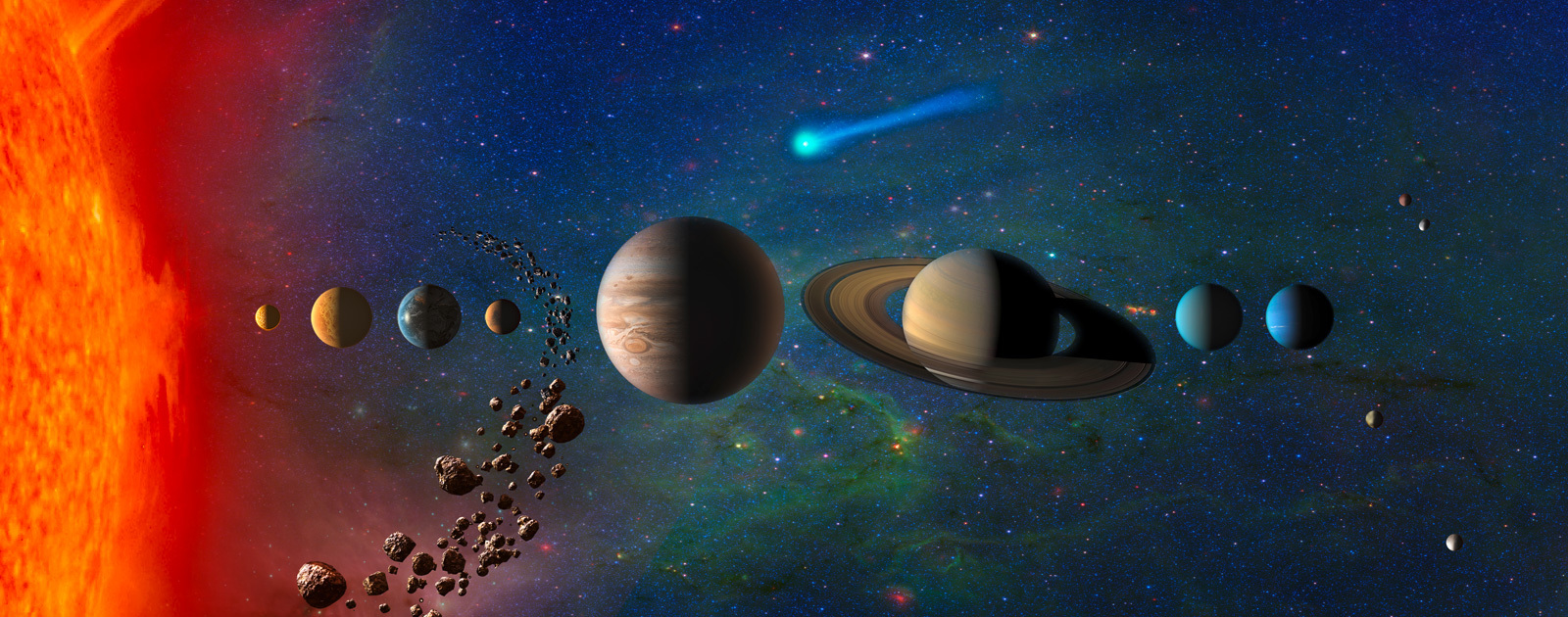News | April 23, 2019
New Planetary Protection Board to Review Guidelines for Future Solar System and Beyond Exploration

Artist's concept of our solar system. Credit: NASA
Following National Academy of Sciences recommendations, advice from the NASA Advisory Council, and subsequent unanimous agreement from NASA’s science leadership, the agency has established an independent Planetary Protection Review Board to review established guidelines for planetary protection and recommend any updates that are required. Planetary protection policies are designed to protect solar system bodies from contamination by Earth life, and to protect Earth from possible harm from potential biological sources beyond our planet.
“It’s vital we revisit the planetary protection guidelines put in place in a previous era to ensure our protection standards reflect the current and future realities of space exploration,” said Thomas Zurbuchen, associate administrator for NASA’s Science Mission Directorate. “This board will not only report directly to me, but conduct essential dialogue to prepare for future robotic missions both by NASA and also commercial entities, and eventual human footprints on Mars.”
Planetary scientist Alan Stern, principal investigator of NASA’s New Horizons mission to Pluto and the Kuiper Belt object Ultima Thule, will serve as board chair.
“As we push new boundaries with both robotic and human exploration of the solar system, and work toward going where no humans have gone before, we must be responsible in our exploration,” said Stern, based at the Southwest Research Institute in Boulder, Colorado. “I’m looking forward to our helping ensure that we have a set of guidelines that help enable a new era of civil, commercial, and public-private partnership exploration, while safeguarding both life on Earth and environments across the solar system.”
The board will provide direction to inform future planetary mission activities and will be instrumental in planning for a possible future Mars sample return mission to retrieve samples from the Red Planet, and return those samples to Earth for study.
Planetary protection is important for many reasons, including the search for life beyond Earth. As one example, if a sample of Martian soil were contaminated with life from Earth, it might be more difficult to discern whether the sample also contained biological material from Mars. And, if a sample of hypothetical microbes from Mars came to Earth, it is essential to protect against any adverse effect this could have for life on our planet.
In light of the possibility of human exploration of Mars, private sector robotic space missions and other future ventures, the newly formed board will review and consider recommendations to update biological contamination guidelines that were developed by the Committee on Space Research (COSPAR), an international scientific organization.
COSPAR was first charged with overseeing planetary protection matters in 1958, and in 1967 the Outer Space Treaty made avoiding “harmful contamination” of celestial bodies and “adverse changes in the environment of the Earth” a legal requirement for its signatory nations. Since then, NASA and other countries’ space agencies have followed COSPAR guidelines. But while there have been updates to the COSPAR planetary protection framework in the interim, recent reviews have raised concerns these standards may need updating both to keep up with our scientific progress and technological advances, especially recognizing changes in the stakeholder community of planetary exploration, and our desire to bring humans to the surface of Mars.
NASA received a recommendation from the NASA Advisory Council (NAC) to establish a multi-disciplinary task force of experts from industry, the scientific community, and relevant government agencies, to develop U.S. policies that properly balance the legitimate need to protect against the harmful contamination of the Earth or other celestial bodies with the scientific, social, and economic benefits of public and private space missions.
After preparation and data gathering activities, beginning late June, over the following three months, the board will meet to assess current planetary protection guidelines in the context of the current space exploration landscape, and formulate their recommendations.
Board members will be selected for their experience in management, engineering, science, industry and legal matters relevant to planetary protection. The board will provide Associate Administrator Zurbuchen an interim report with further activities determined following discussions with him and other key NASA stakeholders.


